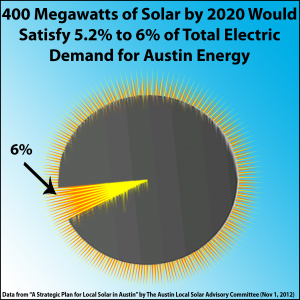Residents and environmental activists in Plaquemines Parish, LA, filled the community center auditorium during Wednesday night’s permit hearing for the RAM coal export terminal proposed for the Lower Mississippi River just outside New Orleans.

Local residents turn up to a hearing on a proposed coal export terminal in Belle Chase, Louisiana. 120 strong compared to 12 the previous year.
Plaquemines Parish, a long strip of wetlands and small communities banked by the Mississippi, is already home to much industrial activity, including two coal export terminals, where coal sits in immense uncovered piles. Speakers at the hearing urged Louisiana’s Department of Natural Resources (DNR) to deny a coastal use permit for a third coal export terminal for various reasons.
Speakers said the RAM terminal that Missouri-based Armstrong Energy has proposed would add to the coal-dust pollution that already burdens nearby communities, as well as bring train traffic to the area. They said the terminal would undermine state efforts to restore disappearing wetlands by employing the Myrtle Grove Sediment Diversion, a project, still in planning stages, to deposit river sediment in the wetlands.
They said coal exported through the terminal would contribute to climate change, pointing out that low-lying Plaquemines Parish and the entire New Orleans area are particularly vulnerable to the extreme weather and rising sea levels that global warming and climate disruption brings. They also pointed out that the community would be buying into a shaky financial proposition by allowing the coal terminal to be built, since Armstrong Energy is amid deep economic problems.
In response to pressure from Plaquemines residents, officials scheduled a second permit hearing for Thursday at 6 pm in Belle Chasse, Louisiana.
“I am definitely in opposition to this terminal,” said Plaquemines Parish Councilman Burghart Turner, who represents Ironton and Myrtle Grove, communities adjacent to the location proposed for the RAM terminal. “With the IMT (International Marine Terminals coal facility) already just south of the community of Ironton, and with this additional coal facility north of Ironton, we would be choking out that community,” he said, referring to the pollution from coal dust and other industrial sources that burden the area.
“The folks in the Pacific Northwest have already said ‘no’ to these types of coal terminals, because they know the problems they present,” said Devin Martin, an organizer for the Sierra Club who lives nearby in New Orleans. “The coal companies are looking to the Gulf of Mexico because they believe we’ll be an easy target. They believe our political leaders won’t stand up – that they’ll be happy to have a dirty industry in their neighborhood, that communities don’t have the kind of voice to stand up to these kinds of projects. But communities in the area are already overburdened with pollution from coal dust and other industrial activity, and they have spoken up repeatedly that they don’t want any development if they can’t be assured it won’t degrade the air, water and quality of life.”
During the hearing, Martin also presented 600 petitions gathered from Louisiana residents, pointing out that opposition to the RAM terminal is present throughout state.
“The financials for Armstrong Coal, the parent company for the RAM terminal, are extremely shaky,” said Hillary Corgey, a researcher for Public Citizen Texas. According to the company’s prospectus, she said, “Their debt increased from 2010 to 2011 from $139.8 million to $244.8 million, and their revenue plummeted from 2009 to 2011 from $10.4 million to $3.4 million. Armstrong’s bond rating is considered a junk bond. That is from both Moody’s and Standard & Poor’s.”
In a joint letter submitted to the DNR during the hearing, state and national environmental groups urged the agency to deny the coastal use permit sought by Armstrong because the RAM terminal is in conflict with a state and federal program to build vital wetlands by depositing sediment from the Mississippi River.
The letter noted that the RAM Terminal could undermine the success of the Myrtle Grove Sediment Diversion by “polluting the water going into the wetlands” with coal and petcoke; both contain heavy metals, sulfides, and other toxic constituents that would harm aquatic species and impede the ability of marsh plants to take root in the newly restored wetlands.
The letter was signed by representatives from Louisiana Environmental Action Network (LEAN), Gulf Restoration Network, Lower Mississippi Riverkeeper, Sierra Club and Public Citizen.
“Our position is that DNR must deny this permit, as it’s inconsistent with the state’s master plan for coastal restoration,” said Scott Eustis, a coastal wetlands specialist for the Gulf Restoration Network.
“The Myrtle Grove Sediment Diversion is a $300 million project, the state’s premier coastal restoration project. There have been years of planning and engineering and there will be at least five to 10 more years of planning. DNR cannot permit a ship terminal in the location where the engineer for the sediment diversion says a barge is inconsistent. DNR has a chance to stand up for coastal restoration. We think that they must.”
Under Louisiana state law, the Coastal Protection and Restoration Authority (CPRA) must find that the RAM terminal is consistent with the state’s coastal management plan before the DNR approves construction of the facility. The CPRA, which expressed concerns about the terminal’s impact on coastal management in 2012, has not yet altered that opinion to find the terminal consistent.
Read Full Post »






